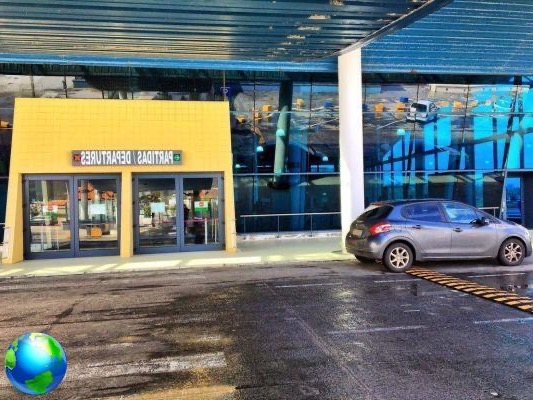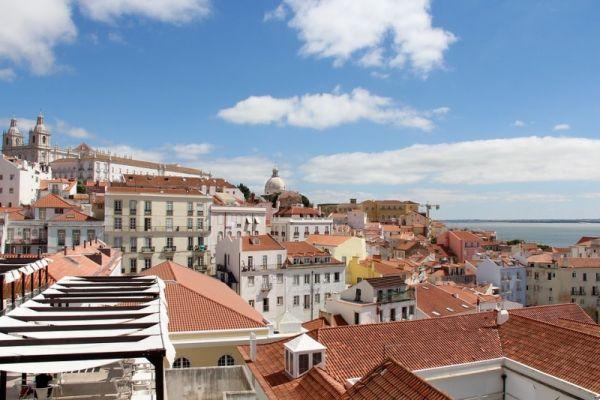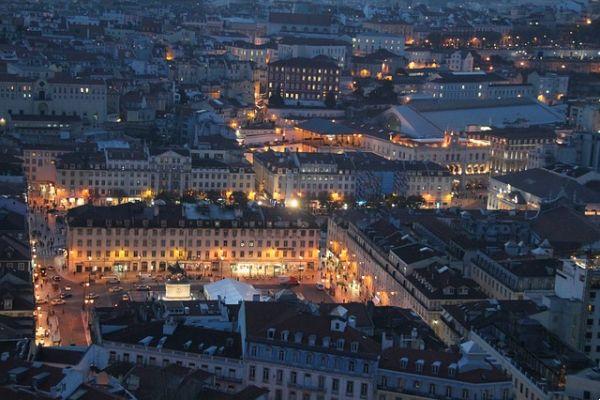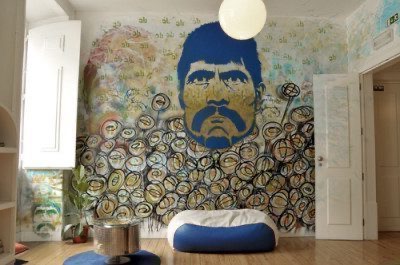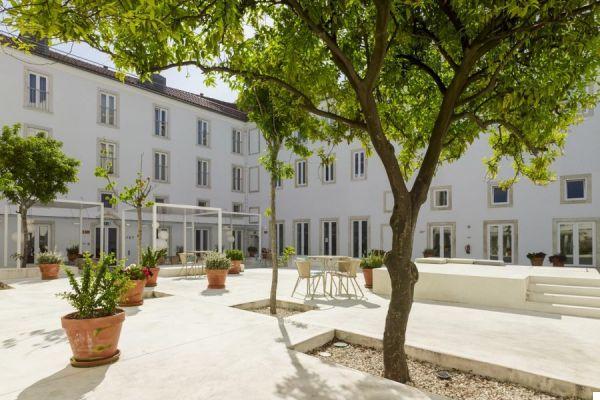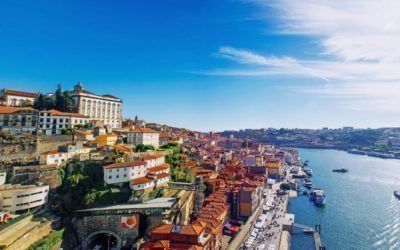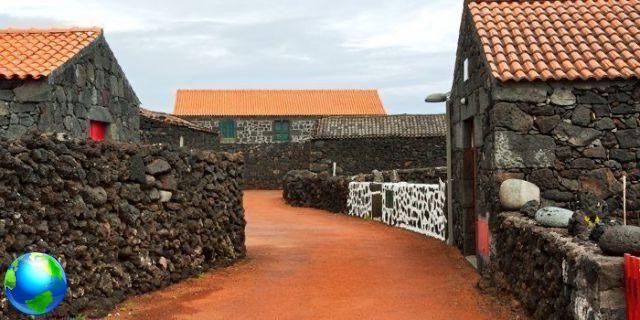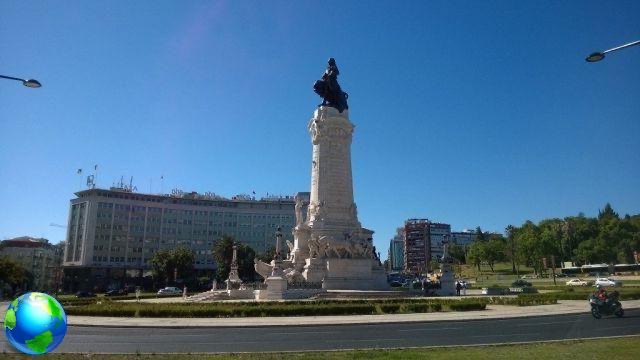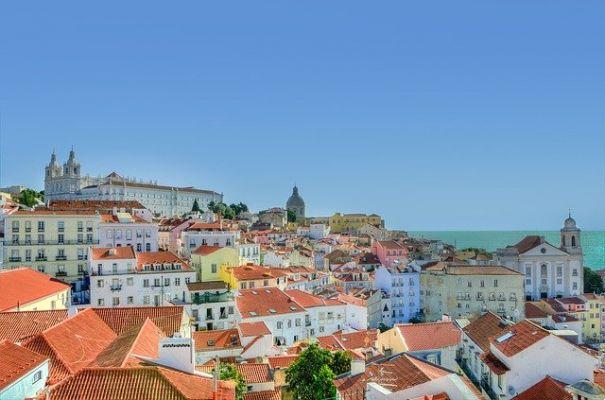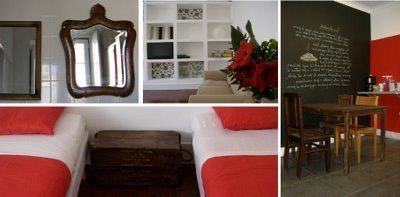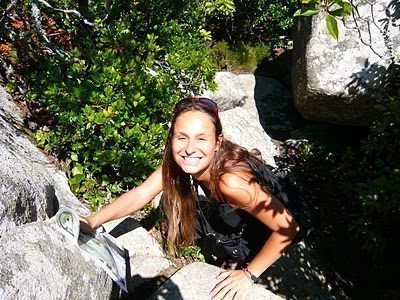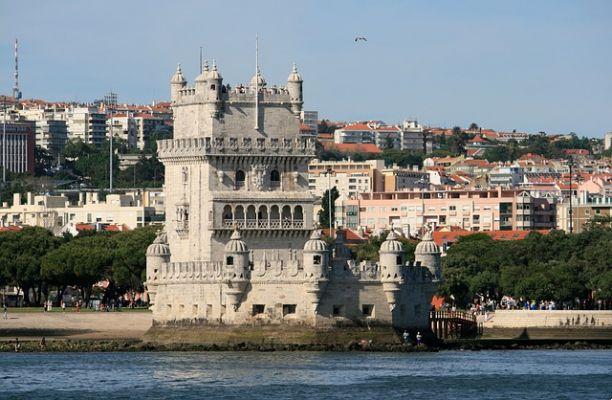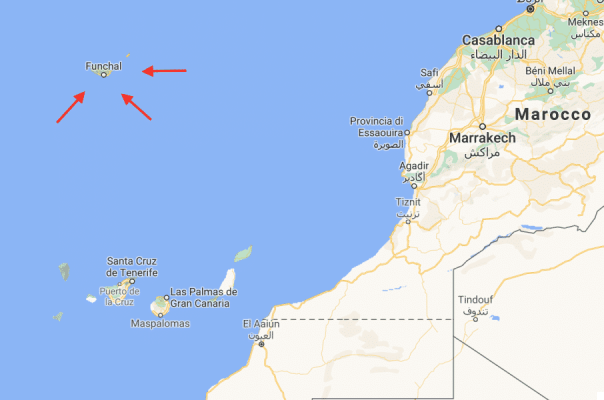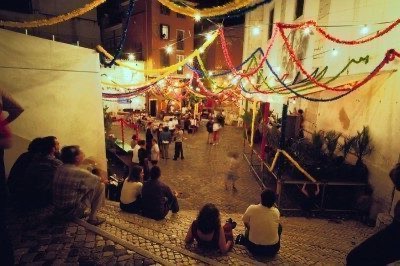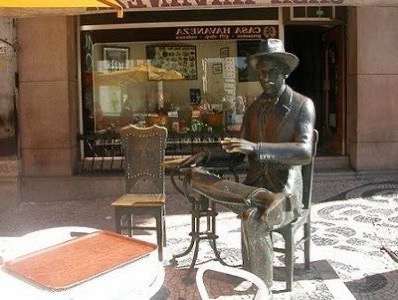Lisbon enters fully into my very personal TOP 3 of European capitals: he shares the podium with Istanbul and Athens. I would say that it is no coincidence that all three have water in front of them and are located in countries with a mild climate. Built on seven hills like my Rome, Lisbon is an elegant, super photogenic city, made of incredible views and sunsets, ancient history and modern architecture. It is a fast growing city, always dynamic, which sparks vitality and energy from every corner! I have been coming here often for several years now, and each time I find it renewed, different and more and more fascinating. Formerly infamous or abandoned neighborhoods (ie Cais do Sodré or Intendente) suddenly become trendy and fill with galleries, bars and restaurants. A stay in Lisbon truly offers everything: it is a city that welcomes you at 360 degrees and knows how to be loved. Put on your sneakers and get ready to walk like a Tibetan Sherpa to explore all its beauties. What you find in this article are all the things to see in Lisbon if you go there for the first time, all the places in my opinion not to be missed, and I anticipate that you will need at least 3 days available. If you had more, you could then go to the discovery of a more unusual and hidden Lisbon (I'll talk about it in this article).
To get your bearings in the city, as I often do, I recommend that you take a free tour (in Spanish!) Which lasts 2h30-3h and which allows you to get to know its history and navigate the neighborhoods.
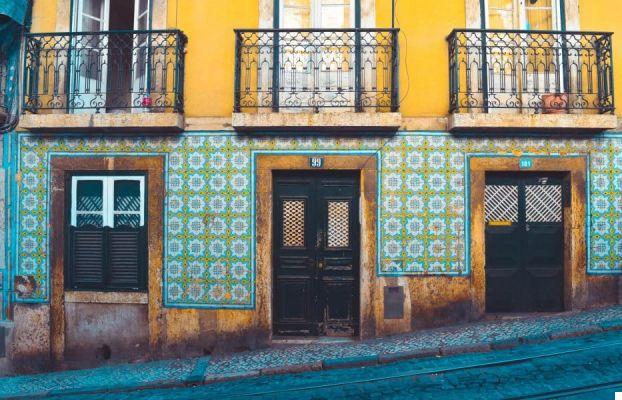
When to go to Lisbon
Having been to Lisbon many times and in all seasons I have developed my own personal case history regarding the weather. Lisbon has a temperate climate and generally little rain; the wettest months are probably February and November. Winter is not particularly cold (even in January for lunch you can eat outside if it's sunny!), While summer can be really hot. The periods that I absolutely prefer are definitely spring and early summer (in June then there is the Feast of St. Anthony and Lisbon is at the top), but to go there also in winter.
How to get around Lisbon
Most of Lisbon's attractions are within walking distance of each other (except Belém, Parque das Nacoes and the Gulbekian Foundation), but it is very easy to get around both by public transport (metro, tram and funiculars) that in taxi, with Uber or with Bolt (which cost very little in Lisbon, especially Bolt!). But be prepared to struggle a lot, because you will have to go down and up continuously.
Where to sleep in Lisbon
On this theme, that is the best areas to sleep and my advice you will find everything in the dedicated article Where to sleep in Lisbon: better neighborhoods and hotels.
Health insurance is recommended
Being in Europe, as Spanish citizens we have the right to health care, but there are specific conditions and ceilings. My advice is to still take a classic medical-luggage insurance that can cover you during the trip, even for Covid-19. I am very happy with many insurance companies, a site that compares the policies of different companies and proposes the most convenient policy for that particular trip. To do this you will have to enter the data relating to your trip and they will send you an email with the best proposal that you can then buy directly online (!!!). All travel insurances also cover medical assistance in the event of a coronavirus infection, including testing if necessary. There is also coverage for the extension of the stay in the hotel due to the quarantine. Likewise, the trip cancellation guarantee includes coverage for illness or death of the traveler or a family member due to COVID-19.
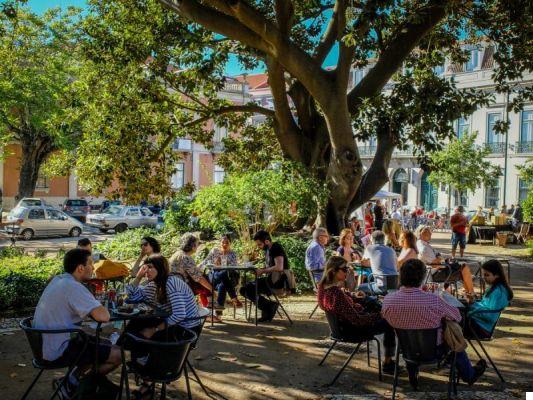
What to see in Lisbon in 3 days
The Alfama
The first thing to see in Lisbon is undoubtedly the Alfama! The old quarter under the castle is one of the most characteristic of Lisbon. Winding cobblestone alleys climb up to the castle, the houses are colorful and covered in magnificent azulejos (the typical designed tiles) with clothes hanging out to dry. Here the fado is still great and it is no coincidence that the Fado Museum and many of the most famous places where you can listen to it. On weekends don't miss the vintage market a Santa Clara field (the Feira da Ladra) and a drink in the sun in one of the bars in Largo do Chafariz de Dentro. If you have time and don't want to miss anything about the history of the oldest district of the city, I recommend that you take a free tour in Spanish (lasts 2,5 hours) to discover the Alfama. The places definitely worth seeing are:
Sao Jorge Castle
What remains of the ancient village of Sao Jorge with its castle and its walls it is visible almost from every corner of the city. Apart from the intact walls, the rest is left to the imagination, but the view from there is something incredible! Walk on the pine-shaded promenade (in summer it's a godsend!) And on the ramparts to get an almost 360 ° view over the whole city. The alleys to get to the castle entrance are then wonderful.
Cathedral the Sé
You will probably start the climb to reach the castle right from Rua do St. Antonio da Sé and you will find yourself in front of the imposing facade of the Cathedral the Sé, in Romanesque style, another thing not to be missed in Lisbon. Founded in 1150 on the site of a large mosque, it has a fairly plain and somber interior. Also visit the XNUMXth century cloister where excavations have revealed Roman remains and Moorish buildings in the foundations.
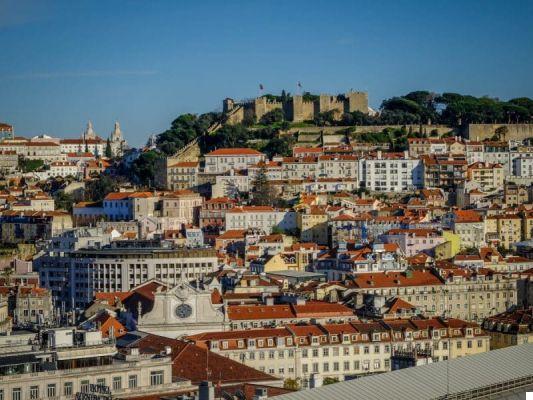
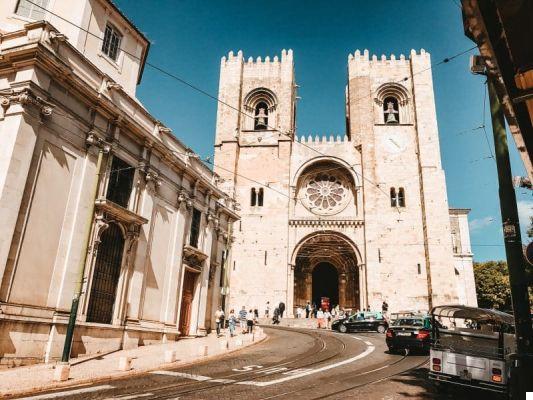
Viewpoint of Santa Luzia and Graca
One of the things that drives me crazy in Lisbon are its miradouros, or viewpoints, which are located on the different hills of the city and open the view to wonderful panoramas. The most famous and most beautiful of the Alfama is the Santa Luzia viewpoint with its tiled porch and a fountain where children come to play in the summer. A little above there is then the viewpoint of Largo das Portas do Sol and, continuing to climb, you can reach that too of grace, in front of the Church of Our Lady of Graca.
National Azulejo Museum
Il National Tile Museum it is located inside the Church and Cloisters of Madre de Deus, a former convent from 1509. The interior of the church, on the other hand, is Baroque and was built after the terrible earthquake of 1755. The collection of azulejos is impressive and it is here that it also finds the longest azulejo in Portugal: 36 meters that tell of Lisbon. The museum also has a nice garden with a cafe. This museum is one of the most relaxing places in Lisbon for me.
Santa Cruz and Mouraria
Descending from the castle towards the Biaxa you will enter 2 very popular and still authentic neighborhoods of Lisbon that are a must see: Santa Cruz and Mouraria, of real towns rather than neighborhoods. The Mouraria it takes its name from the Moors (that is, the Africans who came from the colonies), who were forced to live here when they were expelled from the castle. Even today it is a multi-ethnic district and several places testify to it, such as the Cozinha Popular Da Mouraria restaurant, a community restaurant where “chefs of the world” are invited in rotation. But the neighborhood is also famous for giving Christmas to the greatest fado artists such as Maria Severa Onofriana (Rua do Capelão) first Portuguese fadist or Fernando Maurício. In this regard there is a free tour dedicated to the history of fado in the neighborhood; if instead you were more interested in murals and graffiti (Mouraria is full), you might be interested in a free tour of alternative Lisbon exploring this neighborhood. Fado lovers can instead book a show through this link (it's a must-do experience in Lisbon!). Together with the Barrio Alto, Mouraria is also one of the districts where St. Anthony is celebrated the most (June 13) and it is really suggestive to participate in this great city festival right here, where it is very much felt.
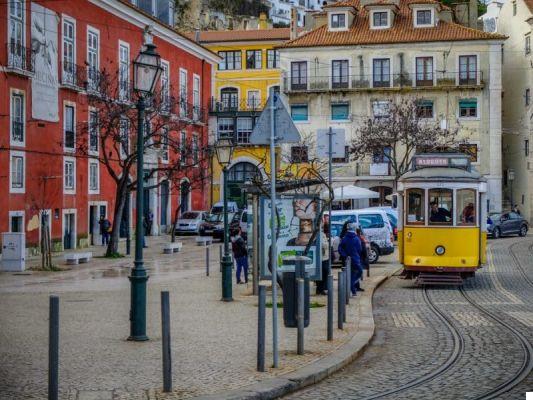
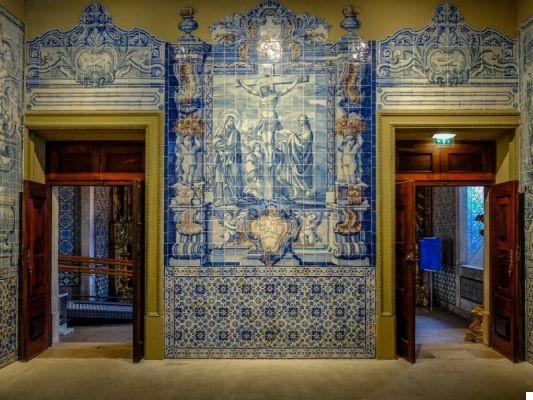
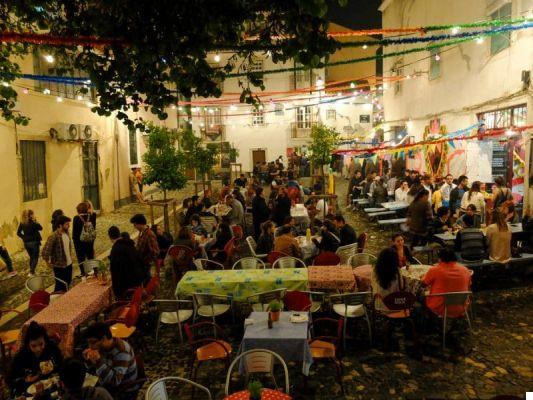
La Baixa and Chiado
Among the things to see in Lisbon there is also the Low, the "lower city", which occupies the flat area between the Alfama and the Barrio Alto. Many of the streets that occupy it are pedestrianized and take the name of the productive activities that once housed, Rua da Prata (the way of the silversmiths), Rua dos Shoeteiros (that of the shoemakers) and so on. Today it is overlooked by restaurants, bars and various shops, both for tourists and not. The Chiado it is instead located on the west side of the Baixa, climbing towards the Barrio Alto, and is the district where the most famous luxury shops and bars of the city are located. Among them, in Rua Garret, there is the famous Brazilian coffee, once frequented by the literati of Lisbon, which has in front of the famous sculpture of Pessoa. If you are interested in learning more there is a beautiful one free tour in spanish of 2h and 30 'which starts from Rossio and explores the Baixa and Chiado.
Rossio and Rua Augusta
The centerpiece of the Baixa is Praca Dom Pedro IV, commonly called Rossio, which has been the main square in Lisbon since the Middle Ages. The central space has a beautiful black and white mosaic on the floor and fountains, and along the whole square there are bars and restaurants with outdoor tables. On the north side of the square is the largest and most important building, the neoclassical Teatro National de Dona Maria II, and next to it the beautiful horseshoe-shaped entrance to the Rossio station. From the square he starts Augusta Street, the main pedestrian street of the Baixa, full of shops and restaurants always looking for tourists (never stop here!), ending with theArch of Rua Augusta.
Commerce Square
After the arch you will find yourself in Praça do Comércio, the immense square that opens onto the river that is the symbol of the city. This is where Charles I was assassinated in 1908 when Portugal was trying to become a Republic. In the center of the square there is a statue of Joseph I and on the sides there are bars and restaurants.
Santa Justa Elevator
On Rua de Santa Justa, going towards the Barrio Alto, you cannot miss this very special lift. L'Santa Justa elevator it was built in 1902 by a disciple of Eiffel (and looking at it you will understand that he was inspired by him!) and climbs 32 meters up to the Convento do Carmo in the Barrio Alto. The view from the cafe located at the arrival of the lift is one of the most beautiful in Lisbon (it is the one in the cover photo of this article).
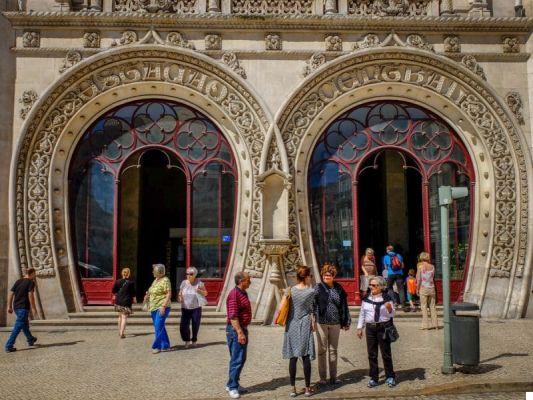
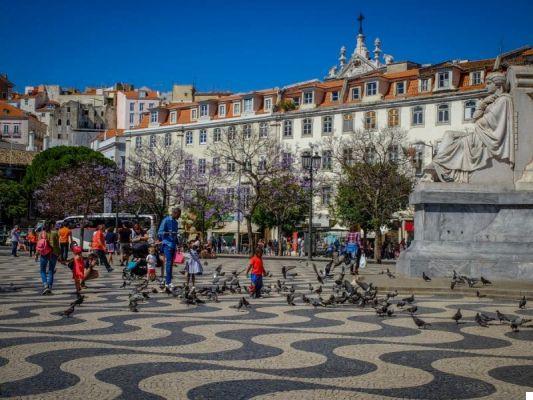
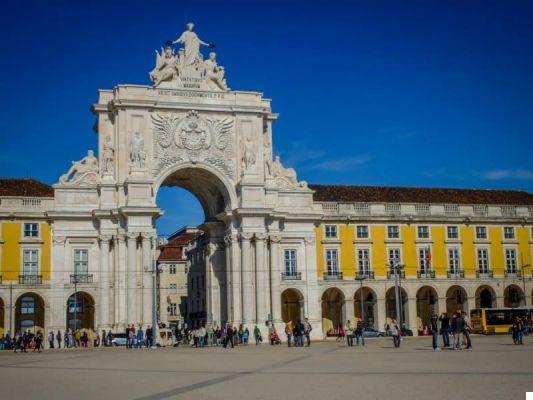
Barrio Alto
After the "lower city", with the Santa Justa elevator you will reach the upper one, that is Barrio Alto, a neighborhood not to be missed in Lisbon. We are talking about the party heart of the city, made up of many alleys where the Portuguese pour to drink from dusk until late at night. The most popular streets are those west of Rua da Misericordia. The rest of the neighborhood has undergone a major refurbishment in recent years and many boutique hotels, clubs, restaurants and trendy boutiques have sprung up. If you don't want to get lost in these beautiful neighborhoods, I recommend that you take part in a free tour in Spanish (lasts 2,5 hours) to discover Chiado and Barrio Alto.
Carmo Convent
A stone's throw from the arrival of the Santa Justa lift we find what remains of the Carmo Convent, a place of great beauty. Built by the Carmelites in the 300th century, the roof collapsed practically entirely during the earthquake of 1755. Today the bare skeleton remains (as for the Abbey of San Galgano) and houses a fascinating archaeological museum with many treasures from the monasteries of Portugal and some tombs of important people (such as Ferdinand I for example).
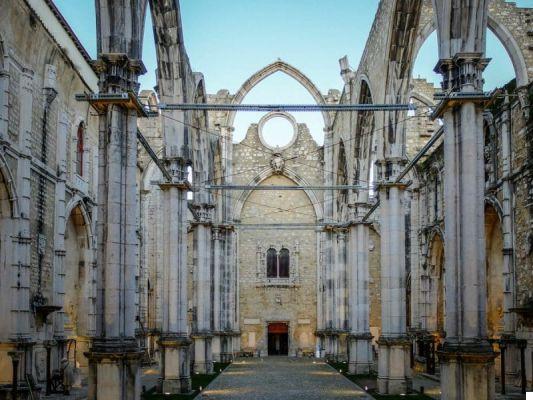
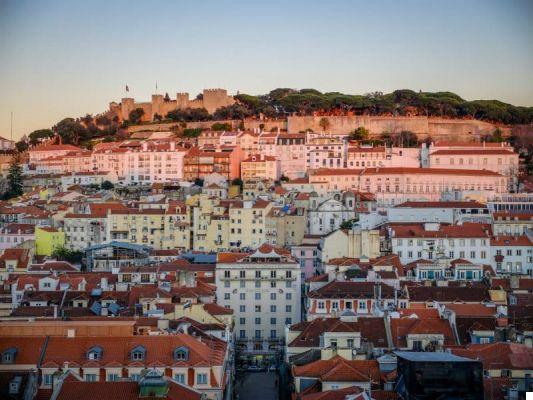
Church of Saint Roque
Not far away you absolutely must enter this church, theChurch of Saint Roque (the church of San Rocco), which was not destroyed by the earthquake of 1755 and remains one of the main monuments in the history of Portuguese architecture. While the facade is austere, according to Jesuit canons, the interior is surprising. Here you will see some magnificent azulejos but above all the Chapel of St. John the Baptist. John V commissioned the papal architect to design the chapel in Rome and then transport it to Lisbon (which happened in 1749). Erected on drawing by Luigi Vanvitelli and Nicola Salvi, is one of the most sumptuous of the Catholic chapels in the world, with inlays in ivory, gold and lapis lazuli.
Viewpoint of Santa Caterina and Sao Pedro de Alcantara
In the Barrio Alto there are also the two most beautiful miradouros in the city: the viewpoint of Santa Catarina and quello of Sao Pedro de Alcantara. To see the sunset with a whitebait in one hand and a mixed toast in the other, my favorite remains the miradouro of Santa Catarina: a must for anyone coming to Lisbon. From here the view sweeps over the river, Ponte XXV de Abril and Cacilhas. From viewpoint of Sao Pedro de Alcantara instead you will see the Castle and the Baixa.
Prince royal
Continuing to climb from Sao Pedro de Alcantara you will reach the relaxing Royal Prince Square with a beautiful palm garden in the center. Converted in recent years, it has become a bohemian area; clubs, restaurants, antique shops and design shops have sprung up around the square. At number 26 of the square, for example, there is the bel palazzo moresco Ribeiro da Cunha which includes concept stores, bars (Gin Lover, for gin lovers) and a restaurant. If you are in the area on Sunday mornings, take a trip to the Organic Mercado in the center of the garden, great for improvising a picnic on the lawn. Not far from the square the Botanical Garden it is another nice place to relax among flowers and plants.
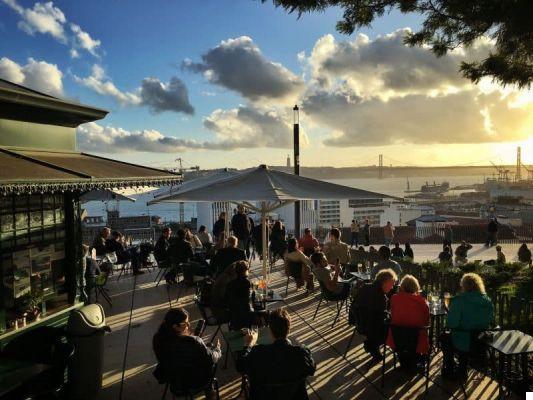
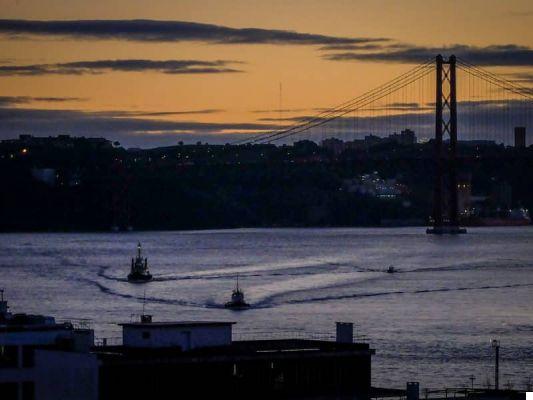
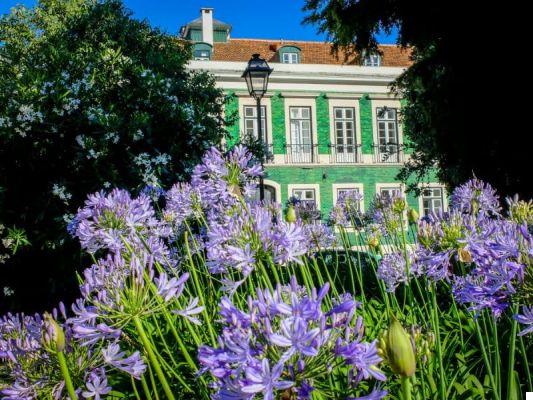
Cais do Sodrè and Bica
To go back down to the riverside you can use one of the most beautiful funiculars in the city, theSpout Elevator, which starts from Largo Calhariz. Built in 1892, it is one of the most photographed spots in Lisbon and a must-see. Once down you will find yourself almost in front of the Ribeira Market (managed by Time Out), the former largest market in Lisbon which has now been refurbished and has become a place where you can eat all the excellent products of the city; inside there are the street-food corners of the best and most important restaurants. This area of the riverside takes the name of Cais do Sodré and the first time I went to Lisbon, back in 1999, I happened to pass it and I felt very difficult. It was the classic red light district near the port where sailors went to drink in search of company. Since 2011 it has been completely "reclaimed" and has become the district that competes with the Barrio Alto for the number of bars and clubs. The main street (Rua Nova do Carvalho the "strada rosa") has become pedestrianized and during the evenings of the weekend it is difficult to walk. There are bars, clubs and restaurants of all kinds; among the many there are two that I am particularly fond of. One is Pensao Amor, a former brothel as its name suggests, which has now become a local with an erotic bar and bookshop, and the other is Sol e Pesca, a tiny bar (once a fishing shop) where the main dish obviously they are canned sardines.
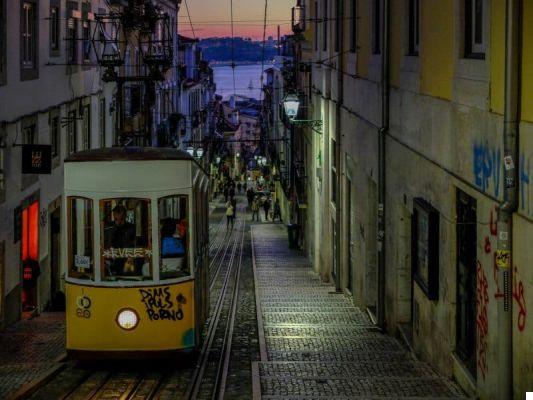
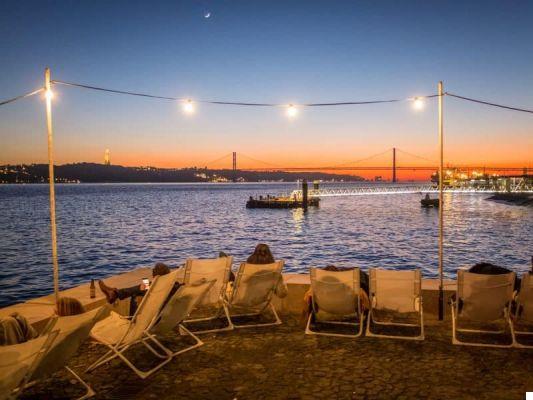
LxFactory
Walking along the Tagus towards the sea, towards Belem, almost under the XXV Abril Bridge, it is worth visiting LX Factory, a former industrial complex dedicated to the printing of Portuguese newspapers and dailies. Converted since 2008, today it houses dozens of ateliers, restaurants, bookstores, coworking spaces, theaters, laboratories, etc. It is a very active complex: the central avenue and all the Open Air area, for example, are used for the Vintage market on Sundays, for concerts and for various festivaleventi especially in the summer months. Above all, do not miss the beautiful Bookstore Ler Devagar and the murals scattered throughout the area. The LX Factory is also a great choice for the evening: super cool restaurants and cool clubs. The view of the XNUMXth June bridge from here is incredible, you will feel like you are in Brooklyn! If you are looking for the best view, go to the terrazza del bar-ristorante Rio Maravilha.
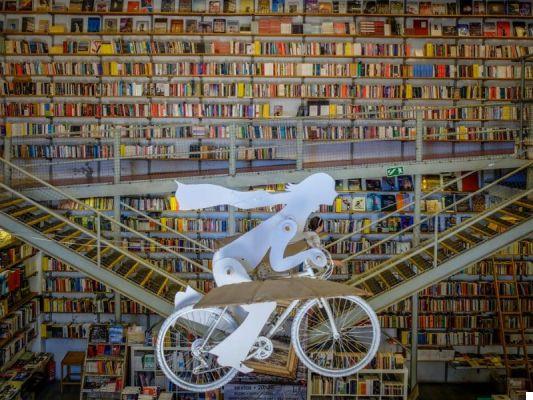
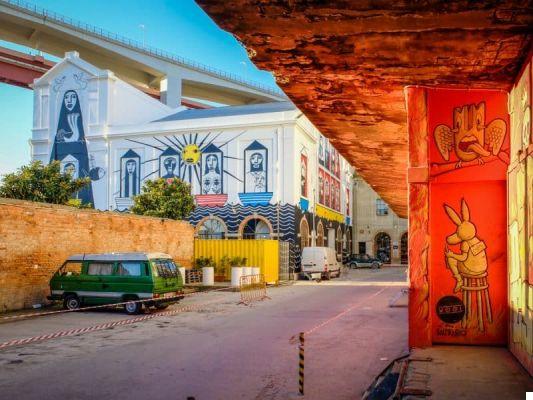
MAAT (Museum of Art, Architecture and Technology)
Proceeding further towards Belem along the Tagus, after about 2 km you will meet one of the most recent museums in Lisbon, the MAAT (Museum of Art, Architecture and Technology), inaugurated in 2016. Designed by the English architect Amanda Levete, it has a structure made of slats and a curved roof on which you can freely climb to admire a beautiful view of the river. Come at sunset if you can, when the sun reflects on the metal slats and gives very beautiful coppery reflections. A valid alternative, always for the sunset, is to participate in a 2h sailing trip on the Tagus where you can see the XXV Abril Bridge and the main districts of Lisbon from the river. I must admit it is very impressive!
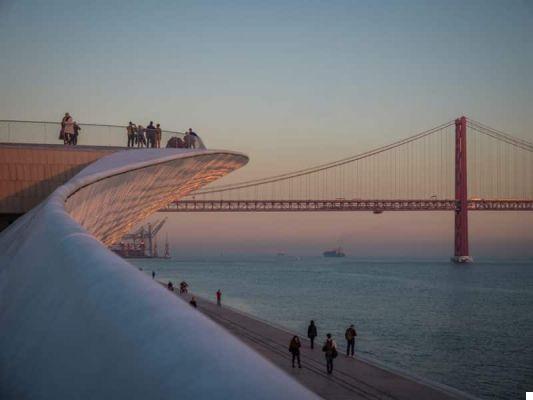
Bethlehem
Another 10 'and you will arrive in the district of Bethlehem, one of the most famous in Lisbon, which houses several interesting monuments, museums, palaces and gardens. It was from here that Vasco de Gama sailed for India in 1497 and several monuments in Belém are dedicated to him and other great Portuguese explorers. Here is also the Belém Cultural Center, one of the largest in the city, which hosts the Berardo Collection (of contemporary art) and the Ajuda National Palace (the royal palace with its botanical garden), which I told you about in this article. Also in Belém, if you want, you can participate in a free tour in spanish of 2h30, where you can find out more about the era of the Great Discoveries and the most important monuments of Belém. A must see in Belém is the pasticceria storica “Old Confectionery of Belém”: here the famous pasteis were born and, to this day, they are the best you will eat in the city.
Jeronimos Monastery
The most beautiful monument in Belém is undoubtedly the Jeronimos Monastery, a beautiful complex built in the Manueline style that was built by King Manuel I to celebrate the return of Vasco da Gama, after discovering the route to India. A curiosity: its construction was financed by five percent of the taxes collected on the import of spices from India. The monastery is a UNESCO World Heritage Site and the cloisters are truly something incredible, with the vaults decorated in honey-colored stone and the niches where the navigators used to confess before leaving for explorations. The church is also very beautiful and monumental and contains the funeral monuments of Manuel I and his family, those of other kings of Portugal, the tomba di Vasco de Gama and the navigator poet Luís de Camões. In the chapel of the cloister instead, the remains of the writer rest Fernando Pessoa, .
Torre de Belém
In front of the monastery, an icon of the city stands on the river: the Belém Tower. Built as a fortress to defend the mouth of the Tagus, the tower was also commissioned by King John II as a ceremonial door. It was built in the early 30th century in Portuguese Manueline style and consists of a XNUMX-meter bastion with four towers. The tower is a UNESCO World Heritage Site and played a key role in the Era of Europe's Great Discoveries, serving as both a fortress and a port from which great Portuguese explorers set out to establish what would be the first European trade in history. with China and India. Today you can visit the various floors and the roof terrace from which you have a beautiful view of the river.
Stone of the Discoveries
Not far from the tower there is the Pedrao dos Descobrimentos, the monument to the discoveries, in the shape of a caravel. It was built in 1960, 500 years after the death of Henry the Navigator, to celebrate the era of discoveries made by Portuguese navigators. Inside the monument there is an elevator that takes you halfway up and from there a staircase that leads to the roof of the monument, from where you have a panoramic view of the Belém district and the Tagus river.
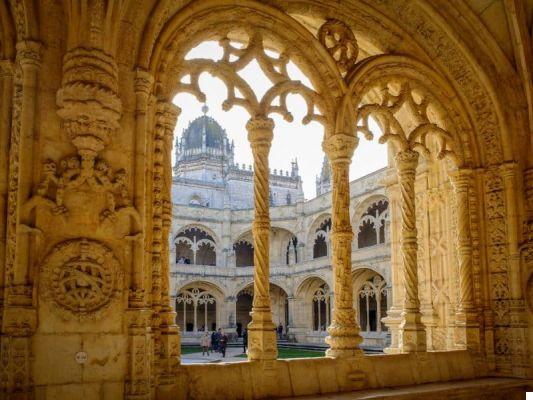
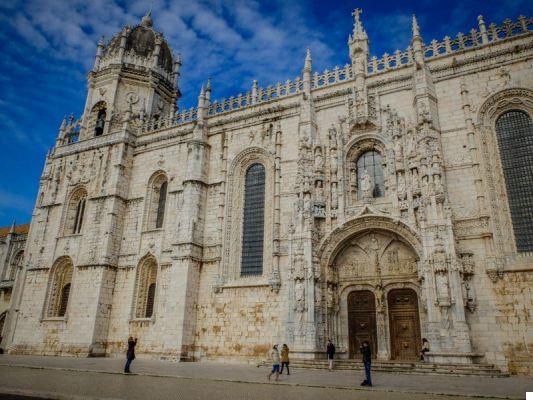
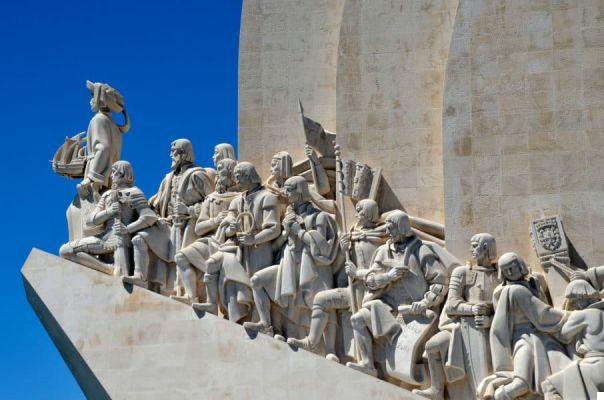
Fundacao Calouste Gulbekian
If you are an art lover, among the things to see in Lisbon you should include the Gulbekian Foundation, a great cultural institution, bequest of the Armenian magnate and collector Sarkis Gulbenkian (1869-1955). The center is located in a very beautiful setting, surrounded by greenery, and hosts concerts, shows and exhibitions. The focus, however, is the Gulbekian Museum which houses the extraordinary art collection that Gulbenkian has collected during his travels around the world and has decided to give to the city. A unique and eclectic museum; its treasures span a very wide time span, ranging from the paintings of the Dutch masters to the Egyptian high-reliefs, from Monet's paintings to the beautiful Art Noveau jewels of René Lalique (one of the most beautiful sections!). Admission is free every Sunday. There is also the Modern Art Center, if you have time, drop by. If you have to choose only one museum to visit in Lisbon, I would definitely tell you to see the Gulbekian Museum!
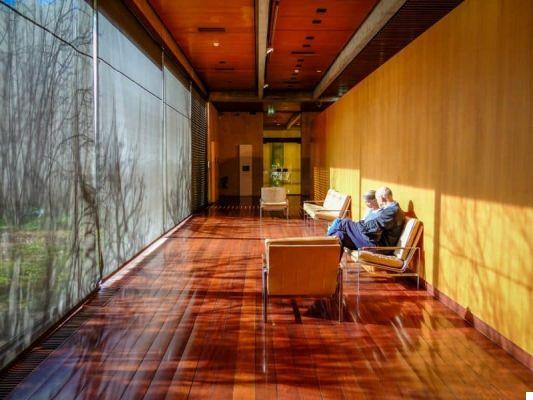
Parque das Nacoes and l'Oceanario
This area north of Lisbon was built for the 1998 EXPO and is an example of urban renewal. Several kilometers away from the center, it can be easily reached by metro going down to the beautiful "Oriente" station designed by Calatrava. Arrived here you will find skyscrapers, concert halls, gardens, the longest bridge in Europe (17 km!) And theOceanarium. The latter is the second largest aquarium in Europe and is a must see! It is really well done, both from the didactic point of view and from the point of view of the number and type of fish present. You will spend hours watching sunfish, sharks, rays, etc. swim. While you're there, pop into the Portugal Pavilion designed by Siza.
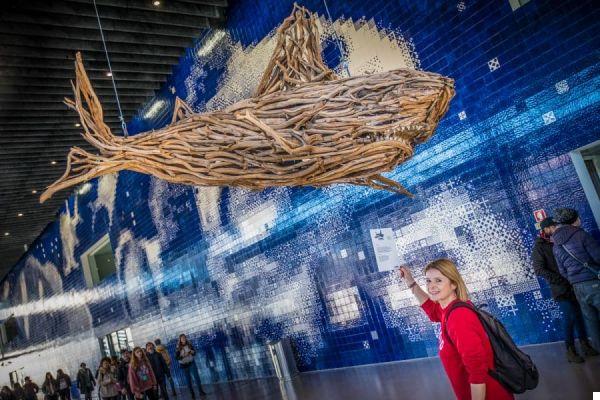
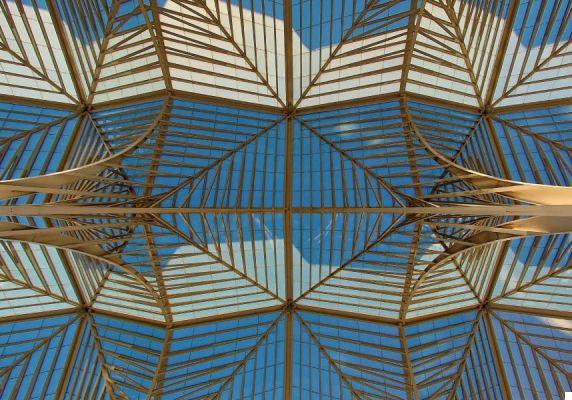
You might be inInterested also in these other articles on Lisbon and Portugal
- Unusual Lisbon: 15 places to see to feel local
- Restaurants in Lisbon: 15 must-see addresses
- Where to sleep in Lisbon: better neighborhoods and hotels
- How to organize a trip to the Azores: when to go, how and where
- Azores: what to see and what to do in these dream islands
- Alentejo (Portugal): what to see
- What to see in the Algarve: a road trip in southern Portugal
- Madeira: what to see on the island of eternal spring





